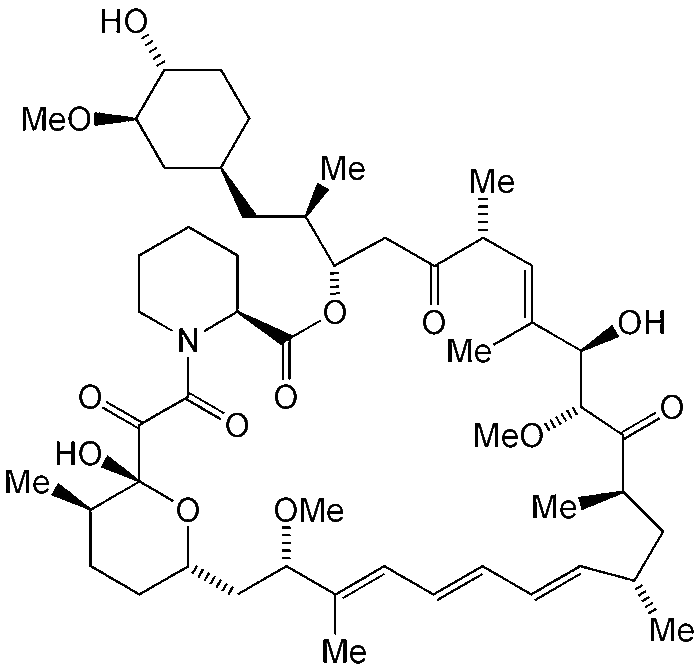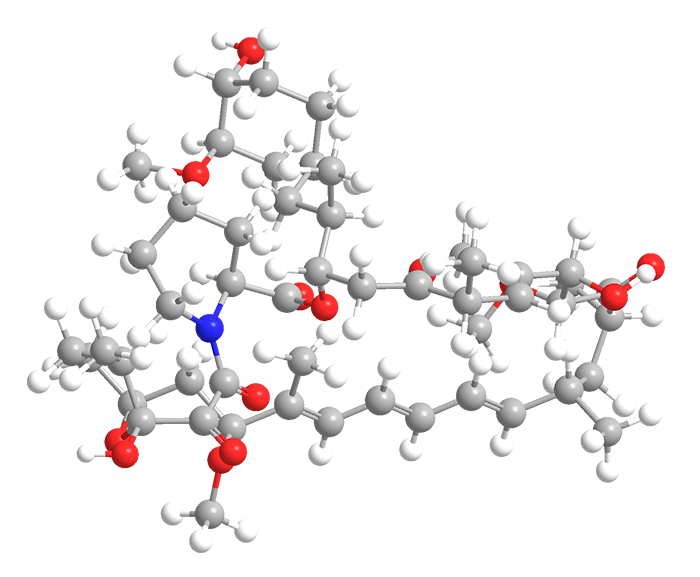What molecule am I?


Macrolides, compounds that contain large (14–16-membered) lactone rings and reduced saccharide substituents, are natural products derived from bacteria. Many macrolides, such as erythromycin and azithromycin, have been formulated into commercial antibiotics.
One macrolide, rapamycin, has a long, convoluted history. In 1964, University of Montreal microbiologist Georges Nógrády, a member of a scientific expedition to Easter Island in the South Pacific, gathered soil samples on the island as part of his effort to discover why the natives did not contract tetanus in spite of favorable conditions for the bacterium.
After finding only one tetanus spore in more than five dozen samples, Nógrády gave the soil to natural product scientists at Ayerst Pharmaceuticals in Montreal. After years of painstaking work, these researchers found that a bacterium in the soil produced a fungicidal compound. Some years later, the molecule’s structure was elucidated, and it was named rapamycin. Eventually it also became known as sirolimus.
Wait—there’s more. Rapamycin turned out to have immunosuppressant and antiproliferative properties and was on its way to being developed as a commercial drug.
But in 1982, Ayerst underwent a restructuring, and the project was dropped. One thing led to another; and after the company became Wyeth-Ayerst, research was resumed.
More years went by, and, in 1999, rapamycin received US FDA approval as an immunosuppressant for organ transplants. A derivative was approved to treat kidney cancer in 2007. Then, in 2009, researchers at Jackson Laboratories in Maine discovered the drug’s “fountain of youth” attributes—it extended the lives of lab mice by 6 months or more.
Today, the main concern about using rapamycin (now owned by Pfizer) in humans is its now-undesirable immunosuppression activity. The research goes on.
Chemical & Engineering News senior editor Bethany Halford tells the full tale of rapamycin’s odyssey. Go to http://cenm.ag/rapamycin.

Learn more about this molecule from CAS, the most authoritative and comprehensive source for chemical information.
Molecule of the Week needs your suggestions!
If your favorite molecule is not in our archive, please send us a message. The molecule can be notable for its current or historical importance or for any quirky reason. Thank you!
Stay Ahead of the Chemistry Curve
Learn how ACS can help you stay ahead in the world of chemistry.

